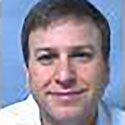INVENTION
TIME Names CRC Go-To Data Source
TIME Magazine named the Johns Hopkins Coronavirus Resource Center one of its Top 100 Inventions for 2020.
After three years of around-the-clock tracking of COVID-19 data from...






























































































































The Johns Hopkins Coronavirus Resource Center established a new standard for infectious disease tracking by publicly providing pandemic data in near real time. It began Jan. 22, 2020 as the COVID-19 Dashboard, operated by the Center for Systems Science and Engineering and the Applied Physics Laboratory. But the map of red dots quickly evolved into the global go-to hub for monitoring a public health catastrophe. By March 3, 2020, Johns Hopkins expanded the site into a comprehensive collection of raw data and independent expert analysis known as the Coronavirus Resource Center (CRC) – an enterprise that harnessed the world-renowned expertise from across Johns Hopkins University & Medicine.
After three years of 24-7 operations, the CRC is ceasing its data collection efforts due to an increasing number of U.S. states slowing their reporting cadences. In addition, the federal government has improved its pandemic data tracking enough to warrant the CRC’s exit. From the start, this effort should have been provided by the U.S. government. This does not mean Johns Hopkins believes the pandemic is over. It is not. The institution remains committed to maintaining a leadership role in providing the public and policymakers with cutting edge insights into COVID-19. See details below.
The Hub — the news and information website for Johns Hopkins — publishes the latest updates on COVID-19 research about vaccines, treatments, and public health measures.
The Johns Hopkins Bloomberg School of Public Health maintains the COVID-19 Projects and Initiatives page to share the latest research and practice efforts by Bloomberg faculty.
The Johns Hopkins Center for Health Security has been at the forefront of providing policymakers and the public with vital information on how to mitigate disease spread.
The Johns Hopkins International Vaccine Access Center offers an online, interactive map-based platform for easy navigation of hundreds of research reports into vaccine use and impact.
Johns Hopkins Medicine provides various online portals that provide information about COVID-19 patient care, vaccinations, testing and more.
Johns Hopkins maintains two data repositories for the information collected by the Coronavirus Resource Center between Jan. 22, 2020 and March 10, 2023. The first features global cases and deaths data as plotted by the Center for Systems Science and Engineering. The second features U.S. and global vaccination data, testing information and demographics that were maintained by Johns Hopkins University’s Bloomberg Center for Government Excellence.

The U.S. Centers for Disease Control and Prevention maintains a national data tracker.

The World Health Organization provides information about global spread.


The CDC also provides a vaccine data tracker for the U.S., while Our World In Data from Oxford University provides global vaccine information.


The CDC and the U.S. Department of Health and Human Services have provided hospital admission data in the United States.
Aaron Katz, Adam Lee, Alan Ravitz, Alex Roberts, Alexander Evelo, Amanda Galante, Amina Mahmood, Angel Aliseda Alonso, Anna Yaroslaski, Arman Kalikian, Beatrice Garcia, Breanna Johnson, Cathy Hurley, Christina Pikas, Christopher Watenpool, Cody Meiners, Cory McCarty, Dane Galloway, Daniel Raimi Zlatic, David Zhang, Doug Donovan, Elaine Gehr, Emily Camacho, Emily Pond, Ensheng Dong, Eric Forte, Ethel Wong, Evan Bolt, Fardin Ganjkhanloo, Farzin Ahmadi, Fernando Ortiz-Sacarello, George Cancro, Grant Zhao, Greta Kinsley, Gus Sentementes, Heather Bree, Hongru Du, Ian Price, Jan LaBarge, Jason Williams, Jeff Gara, Jennifer Nuzzo, Jeremy Ratcliff, Jill Rosen, Jim Maguire, John Olson, John Piorkowski, Jordan Wesley, Joseph Duva, Joseph Peterson, Josh Porterfield, Joshua Poplawski, Kailande Cassamajor, Kevin Medina Santiago, Khalil Hijazi, Krushi Shah, Lana Milman, Laura Asher, Laura Murphy, Lauren Kennell, Louis Pang, Mara Blake, Marianne von Nordeck, Marissa Collins, Marlene Caceres, Mary Conway Vaughan, Meg Burke, Melissa Leeds, Michael Moore, Miles Stewart, Miriam McKinney Gray, Mitch Smallwood, Molly Mantus, Nick Brunner, Nishant Gupta, Oren Tirschwell, Paul Nicholas, Phil Graff, Phillip Hilliard, Promise Maswanganye, Raghav Ramachandran, Reina Chano Murray, Roman Wang, Ryan Lau, Samantha Cooley, Sana Talwar, Sara Bertran de Lis, Sarah Prata, Sarthak Bhatnagar, Sayeed Choudury, Shelby Wilson, Sheri Lewis, Steven Borisko, Tamara Goyea, Taylor Martin, Teresa Colella, Tim Gion, Tim Ng, William La Cholter, Xiaoxue Zhou, Yael Weiss